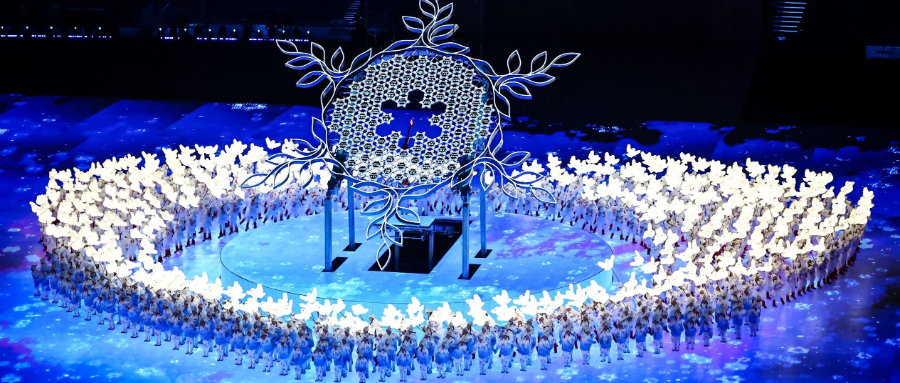
On February 20, 2022, the Beijing Winter Olympic Games officially came to an end, and about two weeks later, the Beijing Winter Paralympic Games officially kicked off, with "green" being a prominent feature of the Games. "Sustainable development" was one of the three main concepts of Beijing's bid to host the Winter Olympics, and "Green Winter Olympics" has also been a concept that the Beijing Winter Olympics has been adhering to since its preparation. The Beijing Winter Olympic Committee released the “Low-Carbon Management of the Beijing 2022 Games (Pre-Games) Report” in January 2022, which clearly sets out measures in areas of low-carbon energy, low-carbon venues, low-carbon transport and low-carbon standards to minimise the carbon emissions generated by the Games. Among these measures, the use of 100% renewable energy to power the Games venues and the large-scale application of clean-energy vehicles were two important carbon reduction measures. This article describes these two measures, as well as other carbon offset measures, to help make the Beijing 2022 Games carbon neutral.
Where did ‘green’ power come from?
From the preparations since 2019 to the end of the Winter Olympics, Winter Olympic venues are expected to consume overall 400 million kWh of electricity. In order to achieve the goal of being the first Winter Olympic Games to use 100% green power for all venues, Beijing Winter Olympic Games has taken two specific measures: first, relying on the Zhangbei renewable energy flexible Direct Current (DC) power grid test project in Zhangjiakou City, all green power delivered are used in the Beijing 2022 competition and non-competition venues; second, allowing all venue owners of the Beijing 2022 Games to purchase green power by establishing a trans-regional renewable energy trading mechanism.
Zhangjiakou is rich in wind and solar energy resources, with an installed power capacity of 16 GW of wind power generation and 7 GW of solar power generation. The Zhangbei renewable energy flexible Direct Current (DC) power grid test project utilises the complementary nature of various forms of energy, including wind power, photovoltaic power and energy storage, to overcome the intermittent and unstable nature of renewable energy generation. It effectively transmits renewable energy generation from the Zhangjiakou area to the Beijing area and is expected to deliver approximately 14.1 billion kWh of renewable energy to Beijing each year. In addition, 11 wind and solar power generation companies located in Zhangjiakou are the main suppliers to the renewable energy trading market.
Hydrogen fuel cell vehicles: guaranteed green hydrogen production
The transport within the Beijing competition zone mainly relies on pure electric and natural-gas-based vehicles, while hydrogen fuel cell vehicles are developed in the Yanqing and Zhangjiakou zones, aimed to maximise the use of clean energy vehicles and reduce carbon emissions. A total of 4090 vehicles were used during the Beijing 2022 Games, including 816 hydrogen-based vehicles and 370 battery electric vehicles, accounting for 29% of the total number of the vehicles.
Although hydrogen fuel cell vehicles emit only water while driving, if the hydrogen is produced from fossil energy sources, it is not a low emission energy source throughout its life cycle. Beijing Huanyu Jingcheng Gas Technology Co Ltd is one of the companies responsible for securing the supply of hydrogen for hydrogen fuel cell vehicles for this year's Winter Olympics. It uses green electricity generated from renewable energy sources such as wind and solar power to produce hydrogen. In addition, Shell’s 20 MW zero-carbon hydrogen project in Zhangjiakou also provides half of the total green hydrogen supply for fuel cell vehicles at the Zhangjiakou competition zone by decomposing water molecules with electricity from onshore wind power. After the Winter Games, the hydrogen produced will also be used for public and commercial transport in the Beijing-Tianjin-Hebei region.
Carbon offsets: Forestry carbon sinks help make the Winter Olympics carbon neutral
On January 13, 2022, Li Sen, Director of the General Planning Department of the Beijing Organising Committee for the 2022 Olympic and Paralympic Winter Games, put forward the goal of "Beijing Winter Olympics will be fully carbon neutral" at a press conference at the State Council Information Office, and this Winter Olympics has become an important testing ground for China to achieve the carbon neutrality target by 2060.
Three main forms of carbon offsetting measures, such as forestry carbon sinks, CCERs/CERs sponsorship certified by Games-related enterprises, and the promotion of a carbon generalised system of preferences (carbon GSP) among the public. Since the start of the Beijing Winter Olympics bid, afforestation projects have been identified as a major measure for carbon offsetting. Beijing and Zhangjiakou have completed afforestation projects of 47,333 hectares and 33,000 hectares respectively, and the carbon sequestration verified by the third-party will all be fully used for carbon offsetting for the Games. In addition, the three official sponsors of the Beijing Winter Olympics, including PetroChina, the China Three Gorges Corporation and the State Grid Corporation, have provided a certain amount of CCERs/CERs to the Beijing Organizing Committee.
Conclusion
The greenhouse gas accounting for the Beijing Winter Olympics and Paralympic will cover the period from January 1, 2016 to June 30, 2022, the longest time span of any Olympic Games, as the accounting will cover the three phases of pre-Games preparation, Games operation and post-Games dismantling. Once the accounting is complete, the Beijing Winter Olympic Organising Committee will also publish a low carbon management report (post-Games). Whether the goal of "Green Winter Olympics" was achieved as expected will be confirmed by the release of carbon emission reduction and carbon offset data.
Author:Yuan Yating
Translation: Chen Shikai
Proofread: Pan Yiren
This article is an original article of the Rock Environment and Energy Institute. Please contact us to obtain the appropriate authorization to reprint. For cooperation and authorization, please send an email to: liying@reei.org.cn
* This article was edited and published by the author in Chinese, because the author accepted an invitation from China Daily.





